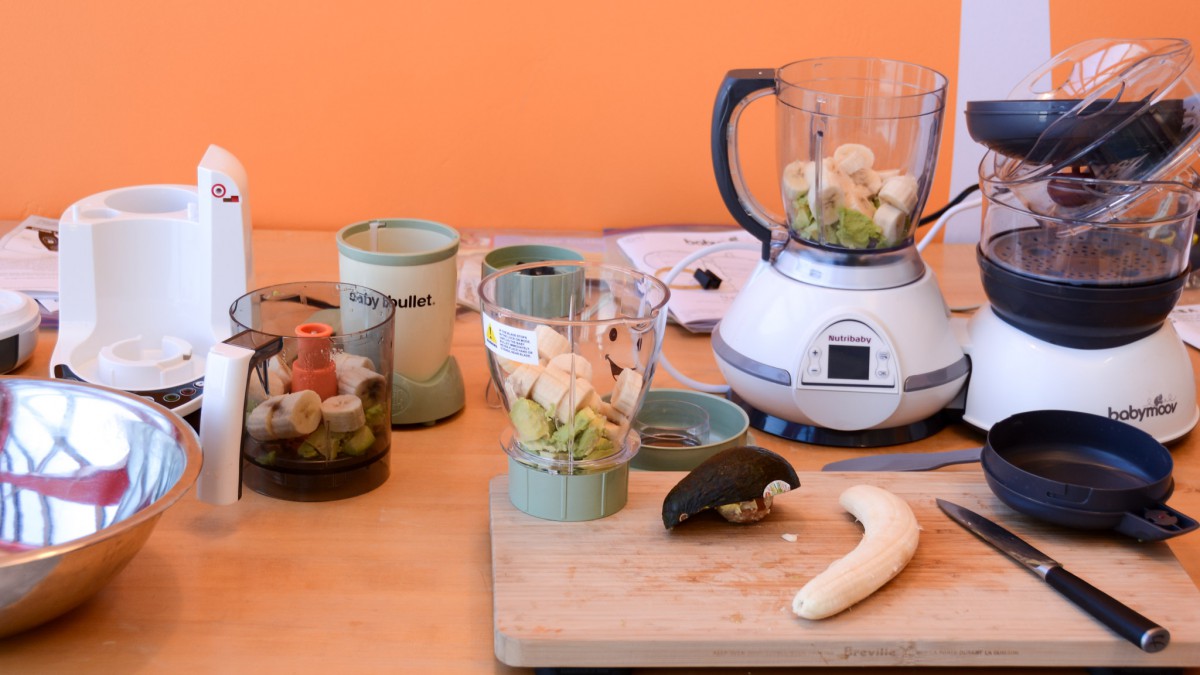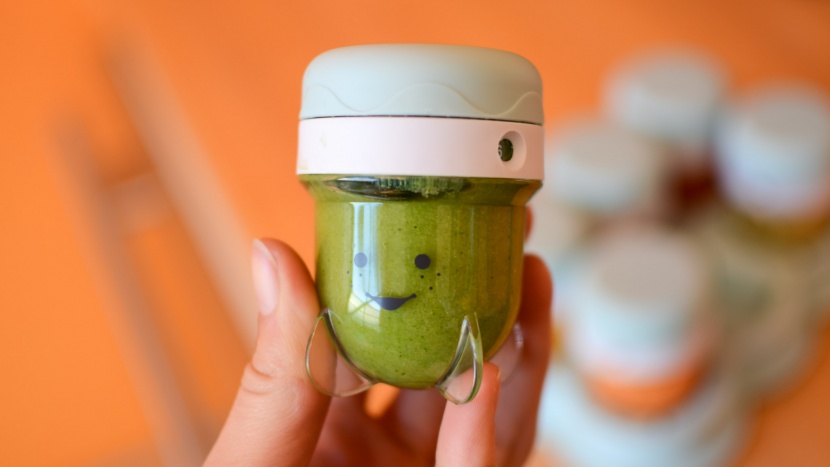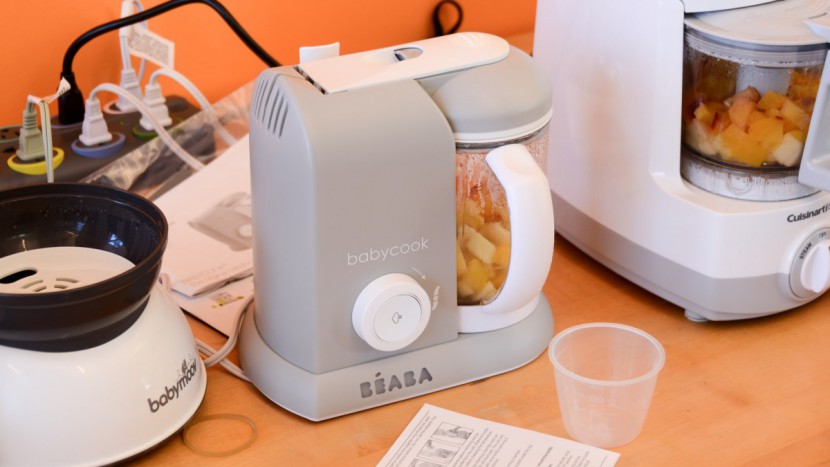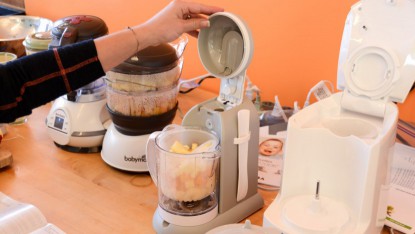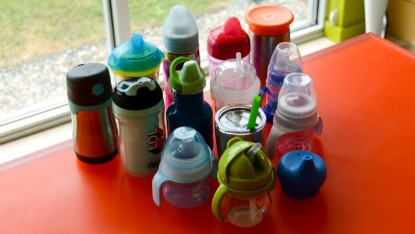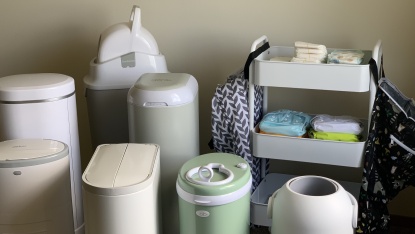Are you thinking about making baby food for your little one? Not sure how to get started or if it is worth the effort? This section provides background on understanding the fundamental differences between popular and top-ranked baby food makers to determine which might work best for your lifestyle.
After spending months in the lab kitchen, testing various foods with our chosen food makers, we discovered a lot about why one baby food maker is better than another.
Potential Concerns of Commerical Baby Food and Toxic Metals
A quick cruise down the baby food aisle at the grocery store, you'll notice lots of available options, with some claiming to be good quality and possibly organic. We understand that plenty of children have been introduced to solid foods on commercial baby food and turned out fine. However, a recent investigation suggests that some leading baby food manufacturers knowingly sold baby food that contained high levels of toxic heavy metals. We understand that purchasing commercial baby food can be convenient for some families. Still, the awareness of babies potentially ingesting high levels of metals requires spotlight. Toxic metals can be detrimental to babies developing brains and bodies. Given our values and beliefs at BabyGearLab, we advocate for health, safety, and best practices in parenting. We suggest making homemade baby food whenever possible, and you'll find peace of mind knowing exactly what your baby is eating.
Do I Need a Special Tool to Prepare Baby Food?
Definitely not. Making baby food is as complex as you want it to be. In a small kitchen with limited countertop and cupboard space, something like the Sage Spoonfuls Puree and Blend can work but is still unnecessary.
Having a product specifically for making baby food is a fantastic luxury. It is certainly convenient to toss some chopped broccoli into an all-in-one product, pour in water, and let the machine run. We really loved that we could set it and forget it, freeing us up to do other things like spend time with the baby. We also found the dedicated pureeing products were easy to use and made quick meals from already cooked foods. Depending on your goals, you might be able to use a blender or mixer that you already have. While it might not do the job as efficiently as a product designed for the task, it can blend food in the same way you'd make mashed potatoes.
Is Baby Food Difficult to Make?
Like many things, cooking for your baby will be as difficult as you make it. You'll be happy to know that making food for a baby can be as simple as pureeing the same foods the rest of the family are enjoying for dinner. Gone are the days of rice cereal only for baby's first meals. With your pediatrician's approval, your baby can enjoy various food options from most food groups. Today, parents are encouraged to provide their infants with a wide variety in their diet once they are ready to journey into the messy world of solid foods. Don't be afraid to save some steamed broccoli from dinner and puree it for your baby later. Your time is at a premium as a parent, and you cannot afford to waste it! Just like naps and changing diapers, whipping up a meal for your baby could quickly become a habit that becomes a seamless part of your family's routine.
Safely preparing food for your baby is no different from regular food prep and cooking rules.
- ALWAYS prepare foods on a clean cutting board, and DO NOT use the same cutting board for both produce and meat.
- Keep meat refrigerated until just before cooking it. After it has finished cooking and cooled, return it to the refrigerator for use within a few days or prepare it appropriately for freezing.
- Use sharp knives when preparing food and exercise caution when utilizing your oven or stove.
- ALWAYS follow the manufacturer's instructions.
- Keep in mind that these machines often contain sharp blades and use very hot steam to function.
Types of Baby Food Makers
There are three types of baby food makers:
- All-in-one — These machines steam (cook) and blend baby's food in one product. Some use a single preparation bowl, and no food needs to be transferred, while others have two bowls and require cooked food to be moved to the blending bowl to finish food preparation. This type of baby food maker has a steam water tank that requires regular maintenance, and some of them can be tricky to see into or clean.
- Blender only — Although this kind of machine does not cook food, requiring you to pre-cook food before use, these products tend to be more straightforward and have fewer parts to clean, plus no hidden areas where bacteria or mold could fester unnoticed. We feel that cooking food on the stovetop is easy and requires less clean-up than an all-in-one machine with the added benefit of not cooking food in plastic, which could potentially lead to leaching chemicals into baby's food.
- Manual Food Mill — This kind of food maker is great for meals away from home or a quick puree. However, keep in mind that these products require some time and muscle (depending on the food) to create a decent puree and are not the most efficient for making large baby food batches.
No single type of food maker will be the perfect choice for all parents and every goal. However, we think choosing a baby food maker can be easier than you first thought once you determine your short and long-term goals, as well as your routine and lifestyle.
First: Do You Really Want to Make Baby Food?
There is no right or wrong answer here. But, if you aren't sure if making baby food is really for you, or you don't want to shell out the cash for a dedicated device, we suggest you choose the blender-only option so you can use the device for other things in the future if baby food making turns out not to be your bag. The Sage Spoonfuls Puree and Blend is an immersion blender that allows for all kinds of mixing outside baby food. This product is easy to use, budget-friendly, and makes excellent purees.
Second: Do you Like to Cook?
If you don't want to hassle with cooking and blending food but want your baby to have a nice homemade meal, all-in-one machines that use the same preparation bowl for steaming and blending are probably your best bet. Cleaning and chopping food is the hardest part of these machines. Once the food is in the bowl and the timer is set, the machine cooks and blends the food without much fuss. Overall, the all-in-one machines did not rank high, but if you think this type meets your needs, check out the Baby Brezza Complete. It has a higher price tag, but given its ability to cook and puree, the price may be a trade-off you are willing to make. Alternatively, if you have concerns about heating baby's food in plastic or are on a tighter budget, you'll want to cook baby's food on the stovetop and use the blender baby food makers to finish the puree.
Your child's mealtime can be as quick and easy as grabbing a container from the refrigerator or popping a few cubes out of the freezer to warm up. We've tested the best baby food storage systems and can guide you to the easiest-to-use and most reliable options to store and keep baby food fresh. Need other baby feeding gear? Our list of only the finest feeding products can help you out.
Conclusion
Making food for your baby should be fun and done by choice, not pressure from those around you. As your baby's guardian, it is your responsibility to determine what is best for your child and your family. We encourage you to take some time to reflect on our test results and consider what products (if any) will work best for you and your family's lifestyle. With multiple options in various price ranges, we feel there is an option for everyone, even if it isn't an award winner.

